|
By Graham K. Rogers
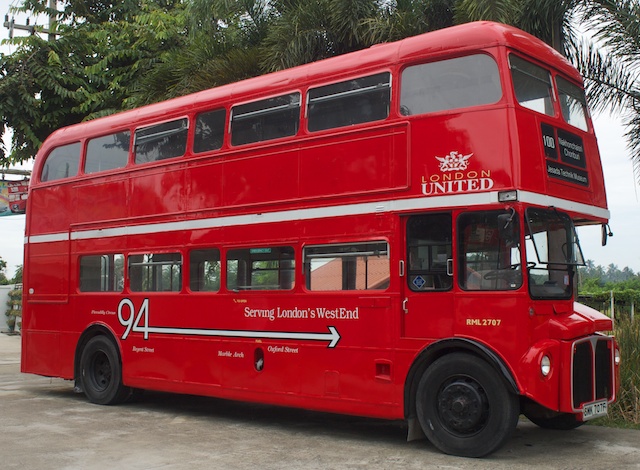
Each semester that I teach my English Communication for Engineers course, one of the projects is for the students to make a 10-minute movie. I am careful to make sure that I control the subjects as I do not want there to be any risk. What they do in their own time is up to the students. If they are making a movie for my class, then there is to be no bungee jumping, no guillotine-testing, no swimming with sharks, nor anything else that I think is too dangerous or otherwise difficult.
What is left still gives those registered for the course a fair amount of flexibility and every year one group is sure to choose the Jesada Technik Motor Museum. I always allow this, but when a group suggested Jesada this year, I thought it was about time I had a look myself. I love older machinery, and from what I had seen of previous student videos, I had owned some of the vehicles that are exhibited.
The students readily agreed and I promised myself I would keep out of their way as I did not want to interfere with what they were doing. There was also the need to avoid any bias: it is hardly fair if I make suggestions to one group that helps them improve the end product.
We arranged to meet up outside the Faculty of Engineering, Mahidol University at around 10:00 am on Sunday, although when I arrived Mon, Foam and Yuan still had some preparation work to do. I kept out of the way.
At 10:55 am, we began the trip from the campus along towards Nakhon Chaisri. The Museum was on Phutthamonthon Sai 8, and although I had never seen it, it was just off the Salaya-Nakhon Chaisri Road that I had used many times in the past when I rode motorcycles. As we left Salaya, I was surprised by the changes on both sides of the road and, with the several kilometers of road works, I hardly recognised anything until we arrived at Sai 8 where a massive double-bend to the left (we turned right), indicates the approach to Nakhon Chaisri.
A short distance down the road we crossed the (now) double line of railway tracks at an ungated crossing. There are scores of accidents each year at these in Thailand. On the way back, it was easy to see why. Just after the crossing, the first indication of the Museum came into sight with a pair of old steam locomotives - a small 0-4-0 and a larger 4-6-0 - to the left. A few hundred meters further and the museum appeared on the right. It was easy to see that this was the place with a 1967 London Transport Routemaster bus at the gate.
I explained to the students how I could remember when these buses were first introduced in about 1960 when the old trolleybus system (twin pickup arms on top of the bus, with parallel cables along the route) was phased out.

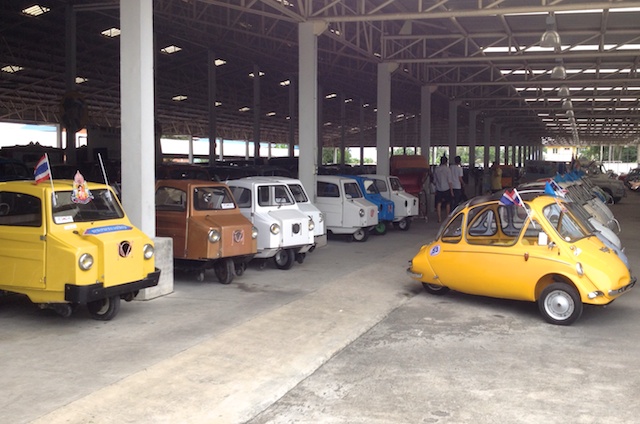
This is a fairly large transport museum. The open structure has a roof to protect from rain and direct sunlight, but there is some trapping of heat, so it gets fairly warm.
There were lots of other reminders for me inside the museum and as we walked in, I could see a line of bubblecars. Several of these were on show: Heinkel, Isetta, Trojan (a British-made version). As some had been exhibited in Bangkok recently, I had seen a line of them coming back home a couple of days earlier. They still carried the show numbers. There was also a Messerschmitt. The students told me that this was the very first car owned by the late Mr Jesada (his son now runs the museum) and so it formed the nucleus of the Museum.

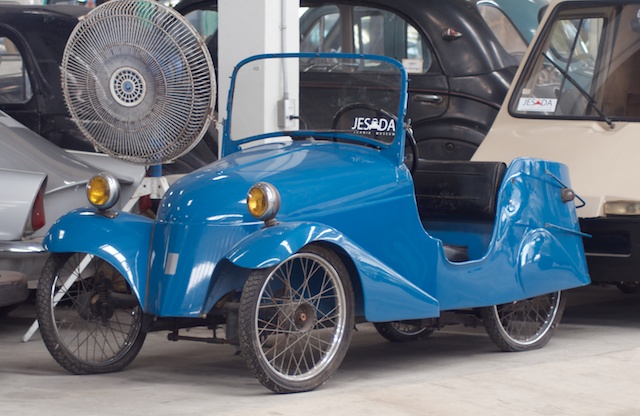
I explained to the students the genesis of the bubblecar which was an economical small vehicle developed as a response to rising fuel prices after the Suez War. As Egypt is in the news again, this was perhaps a timely reminder: Farouk, Naguib, Nasser, Sadat, Mubarak, Morsi. . . .
My father who had owned and used a wide variety of cars in the 1950s and 60s had bought a Heinkel in about 1957 and there were a couple of good examples here. Unlike Britain, of course, where winter weather brings out the grit and salt lorries, the vehicles here are remarkably free of corrosion and one may often see excellent examples of cars that have long since rusted away in the U.K.
One of the cars that my father had used once or twice was the Austin Metropolitan (originally sold as the Nash Metropolitan). The pink one here was bedecked with flowers as it is sometimes used at weddings. Apparently many of the cars may be hired for functions.
The students were surprised to hear that the Heinkel could carry a family of four. "But you were much smaller, then," Mon suggested. I confirmed that that was the case.
There were many cars that I recognised; and a few I had owned examples of, although there were a number of omissions. For example my first car - a Standard 8 - was not there. I also saw no examples of the Triumph brand. This may have been because these were not imported to Thailand; but there were many other brands that had been just names to me in the past; and quite a few I had no knowledge of at all.

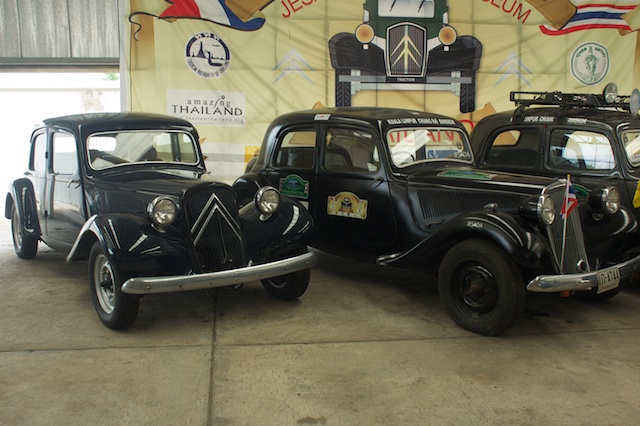
Well-represented were Benz, Renault and Citroen. There was a small selection of MG cars: two from the T-series as well as MGA and MGB (but not the MGBGT - a type I had owned). As well as the London bus, there were a couple of London taxis and among the motorcycles a BMW K100 - my last bike.
I also saw an old DKW, which reminded me that the four rings of the Auto Union were once not only Audi, also including DKW, Horch and Wanderer. Other forgotten makes were Borgward. Are they going to make these again? I knew a guy once who had a Borgward Isabella. There was also an odd-looking Lomax (a small vehicle with a BMW motorcycle engine, like in several of the bubblecars) which is British and may be newer than I thought. And several oddities as well as some more sublime exhibits.
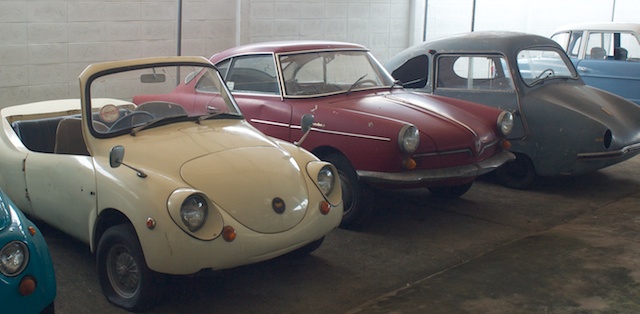
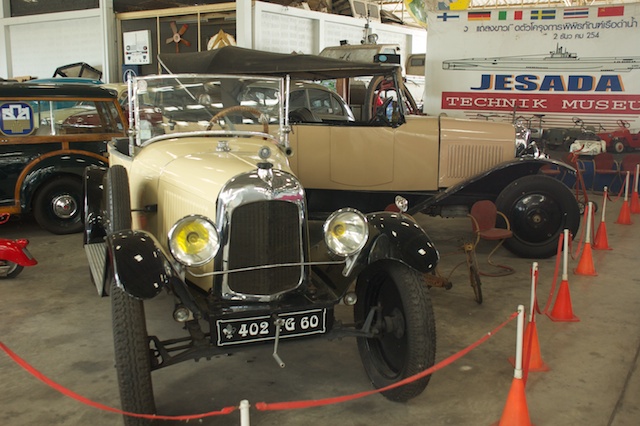
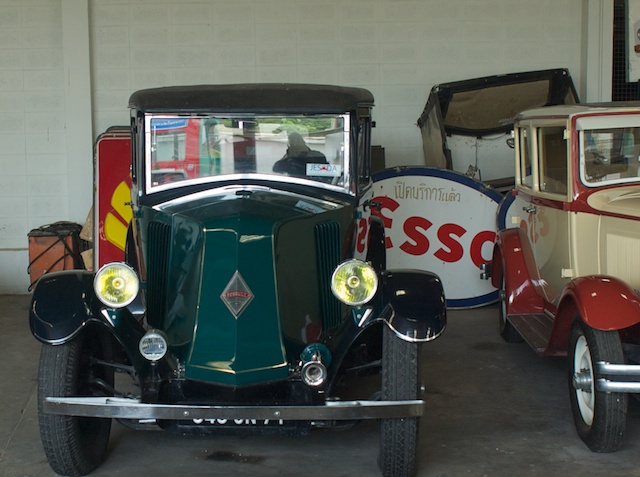
I could see no English brochures, although the map on the Thai information did have correct English: an advance over many organisations here. The Jesada Technik Museum website loaded quickly on the iPhone and I saw that there was an English version with a good selection of pages.

The Museum is open every day except Monday from 09:00 - 17:00 and admission is free. The staff are generous and helpful. One of the students had visited the premises the Friday before and was so impressed with the assistance he received that he bought gifts for them. I thought this was rather touching and as the staff were aware where the students (and me) had come from, there was a better cooperation signalled by this.
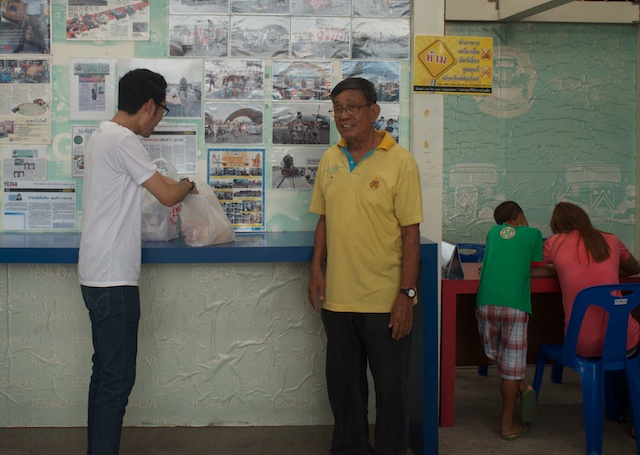
While several makes of vehicle are not represented, this is nevertheless a sizable private collection which is unique in itself and worth visiting if one can find a car or driver. With the current road works, it might be better to take the main road out to Nakhon Chaisri then turn right. Make for the police station and head over the river. . . .
Heading back towards Salaya, I looked to the left as we crossed the railway tracks and saw a train bearing down on us. We were well clear by the time the train passed, sounding its horns, but not slowing. A second or two earlier might have been different. At night. it is even worse.
Back at Salaya I bought the guys lunch as a suitable way to end the day's events.
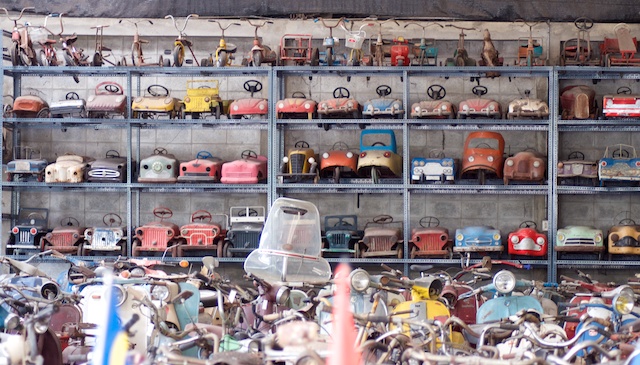


Graham K. Rogers teaches at the Faculty of Engineering, Mahidol University in Thailand where he is also Assistant Dean. He wrote in the Bangkok Post, Database supplement on IT subjects. For the last seven years of Database he wrote a column on Apple and Macs.
|


















